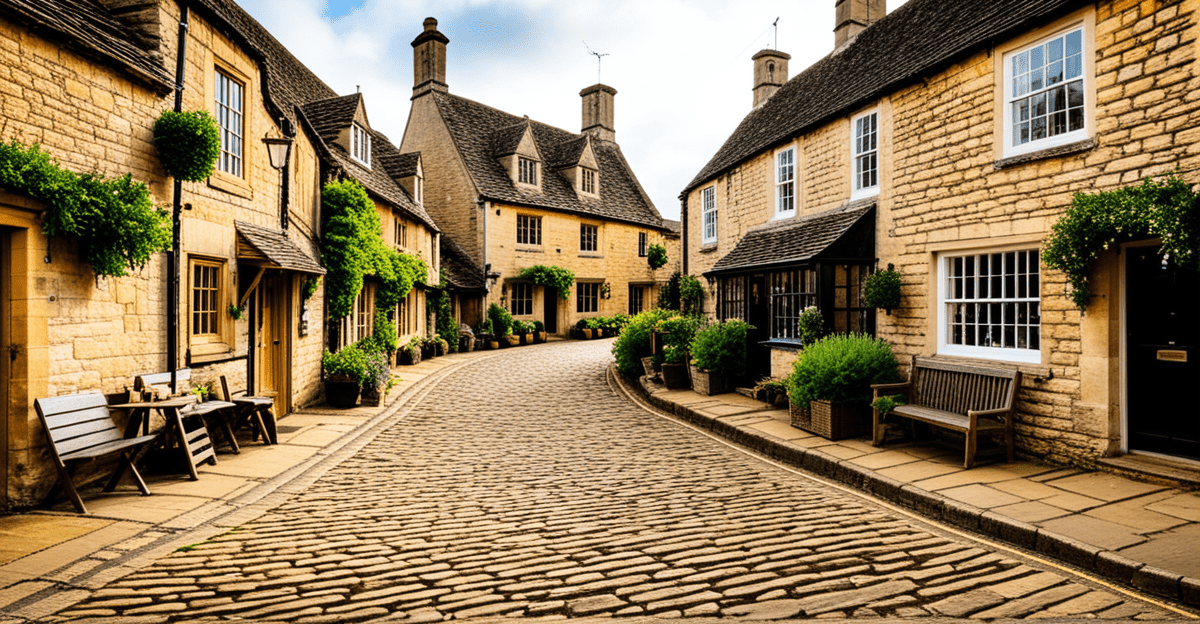Overview of the Cotswolds
The Cotswolds is a captivating area steeped in history and regional charm, often lauded for its picturesque landscapes and timeless beauty. Known for its rolling hills and charming villages echoing with historic towns, the Cotswolds offers a rich tapestry of cultural heritage. This region is not only renowned for its breathtaking scenery but also for its significant role in England’s history, lending it an air of enduring appeal.
Central to the allure of the Cotswolds overview are its numerous historic market towns. These towns, each with its own unique character and story, form the heart of the region. Exploring such places allows visitors to connect deeply with the local culture. Walking through these towns, one cannot help but admire the architecture and vibrant markets that have stood the test of time. Visitors are encouraged to explore these areas on foot to truly appreciate the Cotswolds’ quaint beauty and uncover the stories hidden within its nooks and crannies.
Also to see : What Are the Must-Visit UK Festivals for Culture Enthusiasts?
Walking through the Cotswolds overview is not just a journey through scenic paths but a step into history itself, where every corner tells a tale of the past. By visiting on foot, travellers immerse themselves in a wealth of stories and experiences that are as enriching as they are enjoyable. Whether it’s a leisurely stroll through a bustling market town or a serene walk along the rolling hills, exploring the Cotswolds promises an authentic glimpse into a world where history and natural beauty harmoniously coexist.
Key Market Towns to Explore
When visiting the Cotswolds, immersing yourself in its picturesque market towns is essential. These towns, each with their own distinct character, offer a blend of history, charm, and local culture, making them the perfect destinations for exploratory walking routes.
Also to see : Discover oxford’s literary gems: an enchanting journey into britain’s storied writing heritage
Cirencester
As often considered the capital of the Cotswolds, Cirencester holds a deep historical significance. Walking through its streets, visitors encounter ancient Roman artifacts, impressive architecture, and charming markets. Recommended walking routes span from the Corinium Museum to the serene Abbey Grounds, providing insights into the town’s rich past. For dining, local cafes offer a taste of regional specialties, while accommodations range from quaint B&Bs to elegant hotels.
Bourton-on-the-Water
Known as the “Venice of the Cotswolds,” Bourton-on-the-Water captivates with its unique architectural features. The low bridges and stone houses lining the River Windrush create an enchanting setting for a leisurely walk. Attractions such as the Model Village and nature walks along the riverbank offer hours of exploration. After exploring, visitors can enjoy a meal at one of the town’s riverside eateries, savoring both local and international cuisines.
Chipping Campden
Famed for its historical landmarks and rich cultural heritage, Chipping Campden offers a delightful blend of medieval and modern. Walking tours can start at the Market Hall, leading to St. James’ Church and Grevel House, all showcasing the town’s storied past. For shopping and local epicurean delights, small shops and eateries provide authentic experiences.
Stow-on-the-Wold
Historic inns and the market cross are just some of the unique characteristics of Stow-on-the-Wold, a town steeped in history. Popular walking routes reveal tales of ancient battles and commercial adventures, with stops at local markets offering artisanal products. Dining here ranges from cozy tearooms to gastropubs, perfect for a relaxing break after sightseeing.
Moreton-in-Marsh
Known for its weekly market, Moreton-in-Marsh is a vibrant hub with a storied past. Scenic walking tours might include the historic High Street and the Wellington Aviation Museum. Local eateries serve hearty meals, and various lodgings provide a comfortable stay for overnight visitors. An ideal stop for those eager to delve into the pastoral beauty and lively culture of the Cotswolds towns.
Walking Tours in the Cotswolds
Exploring the Cotswolds by foot promises an authentic glimpse into its cultural and historical richness. Engaging in curated walking tours allows you to uncover hidden gems while delving into the history and unique charm of this region. Whether you opt for self-guided itineraries or prefer guided walks, the Cotswolds accommodates explorers of different preferences and skill levels.
Walking tours come in varied formats, offering experiences tailored to individual interests. For those who enjoy a self-guided adventure, several well-marked trails provide flexibility in both timing and pace. These itineraries often include detailed maps and descriptions, ensuring you encounter both prominent attractions and less-travelled paths. From seasoned hikers seeking challenging terrains to leisurely walkers, everyone finds a suitable route.
Guided walks bring an added layer of knowledge and insight. Local guides, often brimming with anecdotes, offer in-depth perspectives on the rich history and cultural heritage of the area. These tours make history come alive, bridging the past and present through stories intertwined with the landscape. Whether traversing historical village lanes or rambling across lush countryside, guided tours enhance the appreciation of the Cotswolds’ profound beauty.
With walking tours suited for any explorer’s taste, stepping into the heart of the Cotswolds guarantees a memorable fusion of history, scenery, and local culture.
Historical Background of the Cotswolds
The Cotswolds history dates back to ancient times, marking it as a region rich with cultural and historical depth. Its emergence as a prominent area in England is closely tied to the establishment of market towns during the medieval period. These towns served as bustling centers of commerce, where local and regional trades flourished, and their origins shape the heritage of the Cotswolds today.
Several key events played pivotal roles in shaping these market towns, including the wool trade’s significance in medieval England. The prosperity brought by wool trading led to the architectural and cultural development that is still evident in the towns’ well-preserved buildings. Their distinctive stone structures and historical sites reflect the wealth and influence these towns once wielded, with several areas dating back many centuries and contributing to the market town origins.
Preservation of heritage is a cornerstone of the Cotswolds, with efforts made to maintain its architectural integrity and culture. The charming honey-colored stone buildings remain largely unchanged, offering a glimpse into the past for visitors exploring the region. Enabling such exploration, local heritage organizations and councils ensure that the historic significance of each location continues to captivate those who wander through the streets and landscapes. This devotion to preservation invites tourists to experience the Cotswolds not merely as a destination, but as a living testament to its historical and cultural legacy.
Local Attractions and Activities
Delve into the myriad attractions in the Cotswolds, offering a wealth of activities and cultural experiences that promise delight and discovery for every visitor. The region boasts an array of both indoor and outdoor opportunities, ensuring engaging experiences regardless of the weather.
Museums and Historic Sites
The Cotswolds enlightens with a collection of noteworthy museums and historically significant sites. Visitors can explore the Corinium Museum in Cirencester, famed for its Roman relics and exhibits chronicling the area’s past. Equally captivating is the Chedworth Roman Villa, which offers guided tours unveiling the intricacies of Roman life through surviving mosaics and ancient architectural remains.
Natural Attractions
For those drawn to nature, the Cotswolds presents an enchanting landscape with vast local parks and natural reserves. Cotswold Wildlife Park & Gardens invites families and wildlife enthusiasts to encounter a variety of species amidst beautifully landscaped gardens. Meanwhile, the Hidcote Manor Garden showcases stunning plant displays and offers relaxing scenic walks through meticulously designed spaces.
Events and Festivals
Throughout the year, the Cotswolds bursts into vibrant life during its annual events, celebrated with zest and unity in its idyllic towns. The Cheltenham Festival, a premier event in the racing calendar, gathers enthusiasts worldwide, while smaller food and music festivals nurture a sense of community and connection, providing visitors with opportunities to partake in local traditions. By joining these festivities, attendees enjoy firsthand the spirited culture and charm of the towns.
Dining and Accommodation Options
Exploring the Cotswolds involves not only immersing yourself in its historic towns and rolling landscapes but also indulging in the region’s culinary delights and soaking in its cozy accommodations. The area offers a plethora of dining options, ranging from charming casual eateries to elegant fine dining establishments, ensuring there’s something to satiate every palate after a day of wandering through market towns and scenic paths.
Dining in the Cotswolds
For a true taste of the Cotswolds, visitors are encouraged to try local cuisines that showcase regional specialties crafted from fresh, local produce. Traditional British dishes with a modern twist can be found in many gastro pubs, while quaint tea rooms offer an afternoon respite with homemade scones and clotted cream. Farmers’ markets and food festivals also present opportunities to sample artisanal cheeses, chutneys, and baked goods, providing a taste of the local culture through its flavors.
Accommodation Choices
When it comes to accommodations, the Cotswolds boasts a variety of choices to suit different preferences and budgets. Visitors can opt for a stay in quaint bed and breakfasts, where they can enjoy the personal touch of local hosts. For those seeking a more luxurious experience, boutique hotels offer refined stays with amenities and services that enhance the rustic charm of the environment. Unique stays such as converted barns and heritage inns also provide an authentic experience for those looking to connect deeply with the region’s history and charm.
Whether dining in a cozy pub or unwinding in a picturesque countryside hotel, the Cotswolds provides a comfortable and delightful experience, making your trip as tasty as it is memorable.
Tips for Visiting the Cotswolds
Visiting the Cotswolds is an unforgettable experience, and proper planning can enhance your enjoyment of this breathtaking region. Here are some essential travel tips to help you make the most of your trip.
Best Times to Visit
Consider visiting during spring or autumn when the weather is mild, and the landscape is vibrantly lush. These seasons provide a perfect backdrop for walking routes and exploring Cotswolds towns. Summer is ideal for warmer weather and lively festivals, while winter offers a cozy ambiance with fewer crowds.
Transportation Options
Reaching the Cotswolds is straightforward with various transportation options. Trains connect directly from major cities like London, making nearby towns easily accessible. Once there, renting a car provides flexibility to explore remote villages and scenic walking routes at your own pace. Alternatively, local buses and taxis are convenient for shorter journeys within the region.
Essential Packing Tips
To fully enjoy the Cotswolds overview, pack comfortable walking shoes, especially if you plan to explore the historic towns on foot. Weather can be unpredictable, so include layers and a waterproof jacket. A reusable water bottle and snacks are helpful for longer expeditions. Don’t forget a camera to capture the region’s breathtaking natural beauty and charming market towns.
Interactive Resources
Incorporating digital tools can significantly enhance your exploration of the Cotswolds. Visitors are encouraged to utilize various online maps and interactive resources available for planning walking tours. These tools are designed to offer detailed itineraries, equipping explorers with the means to discover must-see attractions and hidden gems alike.
For those interested in structured exploration, there are numerous online platforms providing comprehensive guides. Interactive maps often include detailed routes complete with elevation profiles and estimated times, accommodating both leisurely walkers and avid hikers. Whether you’re tracing historic paths, discovering local market towns, or enjoying the scenic countryside views, these resources are invaluable for maximizing your experience.
Additionally, engaging with local tourism websites can offer up-to-date information, including itineraries and travel alerts, ensuring you’re well-prepared for your Cotswold adventure. These sites frequently provide handy navigation aids and can highlight seasonal activities or special events in the region.
Using these digital tools not only streamlines your visit but also enriches your connection to the Cotswolds’ unique regional charm. With a few clicks, you can tailor your journey to fit personal interests, enhancing every step through this historic and culturally rich area.













